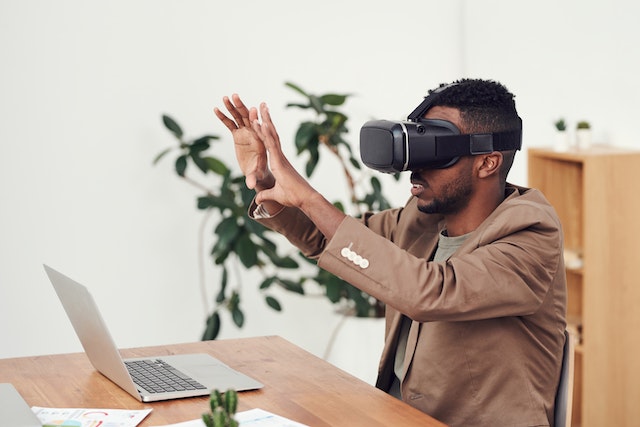
With the evolution of technology, the boundaries between the real and virtual worlds are blurring. Augmented Reality (AR) is a prime example, bridging the gap and bringing digital elements to the physical environment. While AR was once a concept of science fiction, it’s now being used to create transformative mobile app experiences. Ready to unravel the magic behind it? Let’s dive in.
Understanding Augmented Reality
At its core, AR is about superimposing computer-generated visuals, sounds, or sensory enhancements onto a real-world environment in real-time. Unlike Virtual Reality (VR) which immerses the user in an entirely virtual environment, AR enhances the real world with digital details.
According to data from Statista, the AR market is set to reach an astounding 198 billion U.S. dollars by 2025, reflecting its burgeoning potential.
Also read : What You Should Expect from Your Ecommerce Store in 2023
Why the Buzz Around AR Mobile Apps?
- Interactive Experience: AR provides an engaging experience, turning static objects into dynamic experiences. For instance, pointing your phone at a historical monument could provide you with its rich history.
- Enhanced Real-World Utility: Imagine pointing your phone at a restaurant and instantly accessing its menu, reviews, and reservations. That’s the real-world utility AR offers.
- Unique Marketing Avenue: Brands can provide immersive product previews or virtual try-ons, offering customers a novel way to interact with their offerings.
Steps to AR Mobile App Creation
Building an AR mobile app is no ordinary feat; it involves a mix of creativity, technology, and user-centric focus. Here’s a roadmap:
- Clarify Your App’s Purpose: Determine what you want to achieve. Whether it’s a gaming app, a shopping assistant, or a learning tool, clarity is paramount.
- Select AR Tools and SDKs: Tools like ARKit, ARCore, and Vuforia have eased the AR development process. Choose based on compatibility, features, and community support.
- Design with the User in Mind: AR should enhance, not complicate. Ensure your app’s design is intuitive and enhances the user’s real-world experience.
- Develop & Test: With your design in hand, embark on the development process. Regular testing ensures your app runs smoothly and provides the desired AR experience.
- Launch & Iterate: Once live, gather user feedback and continue to refine your app for optimal performance.
A detailed guide on ar app development can provide in-depth insights into each of these steps, aiding in crafting a standout AR app.
Also read : Instagram Teaming Up with Third Parties to Make Custom AR Filters
Challenges in AR App Development
While AR offers immense potential, it does come with challenges:
- Device Limitations: Not all smartphones are equipped to handle AR efficiently, potentially limiting your user base.
- Complex Environment Recognition: AR apps need to recognize diverse environments, which can be challenging given the variations in light, objects, and perspectives.
- Maintaining Realism: Keeping the virtual elements realistic and well-integrated with the physical environment can be tough but is vital for immersion.
However, as noted by AR Insider, advancements in technology and the entry of tech giants into the AR sphere are addressing these challenges head-on.
Looking Ahead: The Future of AR Apps
With innovations like AR-powered smart glasses and advancements in AI, the potential applications of AR are set to explode. As highlighted by a report from the Harvard Business Review, AR is moving beyond mobile apps and is being integrated into a broader array of applications, from manufacturing to healthcare.
Final Thoughts
Augmented Reality is reshaping the way we interact with the world and our devices. From gaming and entertainment to retail and education, AR apps promise richer, more engaging experiences. For developers and businesses, it offers a frontier rife with opportunity. As the lines between the digital and physical continue to merge, AR stands as a testament to the power of technology to redefine reality. So, if you’re looking to harness this potential, now is the time to step into the world of AR app development and bring your vision to life.


